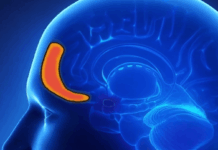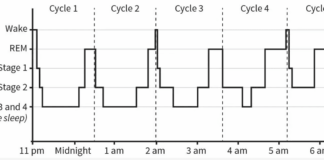
You would think that the case against excess sugar in the diet is now clear cut–that the scientific community is lined up against it. You might also think that, as a result, like cigarettes, the consumption of sugared foods and beverages is on the decline. But you would be wrong on both counts. To paraphrase the great Mark Twain, “The Reports of sugar’s death are greatly exaggerated.” And this is especially true when it comes to sugared drinks: sodas, energy drinks, sports drinks, etc.
Like Alice, we are about to go “through the looking glass” and enter a bizarro world where up is down and left is right. We are about to enter the unsettling world of scientific studies where, despite everything you have been led to believe, very little is what it seems. And like Alice, we will start at one point and end at a different point far, far away–before we finally get to return exactly where we started in our normal reality. Our journey will begin with a discussion of sugared beverages and a recent study that says they are still alive and well, totally contradicting everything we thought we knew about changing dietary habits in the United States. But that’s just the beginning. We will very quickly move on to a discussion of the numerous contradictory studies about the effects of sugar–and once again, we will find that everything we thought we knew is contradicted by numerous studies of dubious reality. And ultimately, we will conclude by trying to get a handle on how to deal with all of these contradictions–which will finally allow us to go back through the looking glass to the marginally saner world we know and love.
The CDC National Health and Nutrition Examination Survey
For years, U.S. Dietary Guidelines, as well as the alternative health community which has been on this issue for far, far longer, have urged people to reduce their consumption of sugary drinks. And for a while, at least, it appeared people were listening. As for the scientific community, as we will see in a bit, their message has been decidedly more mixed, and this may have led to some of the confusion we are seeing from the public at large. But first, some history.
During the majority of the 1990s, the volume of soda consumption grew about 3 percent a year. But beginning in 1999, the rate of growth began to slow–and then actually decline beginning in 2005. And for 11 straight years it “apparently” continued to fall, reaching levels not seen since the Clinton administration.1 And indeed, some of that decline was real as many consumers switched to bottled water. But, as it turns out, much of that so-called decline was illusory as consumers merely migrated from sodas to energy drinks, sports drinks, iced teas, flavored waters, and bottled coffees–all of which have plenty of added sugar.
According to the CDC, the “trend” of declining sugared beverage consumption is over–and actually has been for several years.
The net result is that according to a data brief just released by the Centers for Disease Control and Prevention (CDC), that “trend” of declining sugared beverage consumption is over–and actually has been for several years.2 According to the brief, both adults and children are essentially consuming the same number of calories from soda, sports drinks, and other sugared beverages now as they did in 2009-10, the last time the CDC published comparable data. Also, according to the market research firm Euromonitor, at the same time as the U.S. market for conventional carbonated sodas was contracting by 0.6 percent between 2011 and 2016, the sales of other sugar drinks as listed above grew by between 5 and 13 percent.3
With that as a background, let’s take a closer look at the CDC study that triggered this newsletter.
The study/report started by stating that sugar-sweetened beverages are a major contributor of calories and added sugars to diets of U.S. adults.4 It then went on to say that other studies have found that sugar-sweetened beverage consumption has been linked to weight gain, metabolic syndrome,5 dental caries,6 and type 2 diabetes in adults.7 Further, the 2015–2020 Dietary Guidelines for Americans recommend reducing added sugars consumption to less than 10% of total calories per day and, specifically, to choose beverages with no added sugars. The CDC report then presents its own results for the consumption of sugar-sweetened beverages among U.S. adults aged 20 and over for 2011–2014 by sex, age, race, and Hispanic origin.
For this report, sugar-sweetened beverages include regular soda, fruit drinks (including sweetened bottled waters and fruit juices and nectars with added sugars), sports and energy drinks, sweetened coffees and teas, and other sugar-sweetened beverages (including horchata and sugarcane beverages). Sugar-sweetened beverages do not include diet drinks (defined as less than 40 kcal/240 mL of the beverage); 100% fruit juice; beverages sweetened by the survey participant, including coffee and teas; alcohol; or flavored milks.
The study concluded that:
- During 2011–2014, 49.3% of U.S. adults consumed at least one sugar-sweetened beverage on a given day.
- A higher percentage of men (53.6%) than women (45.1%) consumed at least one sugar-sweetened beverage. Men were also more likely than women to consume two sugar-sweetened beverages, or three or more on a given day.
- Among men, 29.1% consumed one sugar-sweetened beverage, 16.0% consumed two sugar-sweetened beverages, and 8.6% consumed three or more on a given day.
- Among women, 27.3% consumed one sugar-sweetened beverage, 11.5% consumed two sugar-sweetened beverages, and 6.4% consumed three or more on a given day.
Percentage of adults aged 20 and over who consumed sugar-sweetened beverages on a given day, by number of beverages and sex: United States, 2011–2014

It also should be noted that among both men and women, consumption of sugar-sweetened beverages decreases with increasing age, and calories consumed from sugar-sweetened beverages are almost triple among young adults compared with older adults. Also, among men, sugar-sweetened beverage intake is highest among both non-Hispanic black and Hispanic men, followed by non-Hispanic white and non-Hispanic Asian men. For women, sugar-sweetened beverage intake is highest among non-Hispanic black, followed by Hispanic, non-Hispanic white, and non-Hispanic Asian women.
What Does the Study Mean?
So, we all kind of assumed that everyone knew that excessive sugar consumption–especially in the form of sweetened beverages because you consume so much sugar that way–is bad for your health and that, like cigarettes, consumption was dropping. We assumed that everyone knew that sugary drinks have been linked to obesity in children and adults–that they also contribute to heart disease, type II diabetes and some obesity-related cancers, all of which have reached epidemic proportions in the United States. But as the CDC study shows, we assumed wrong. So, what possible reasons could there be for that?
Well, first of all, it’s possible that for whatever reality there was in that ten-year decline in soda sales, it may have come from Americans who were particularly receptive to changing their behavior, such as upper-income individuals. That leaves a lower income, soda-drinking population whose sugar drinking habits are more entrenched.8
There should also be concern about the huge disparity in sugared-beverage consumption in young VS old. It’s not unlikely that the health messaging that worked on Baby Boomers and Gen X populations, may not have resonated with Millennial and Post-Millennial generations. As Henry David Thoreau said: they seem to be marching to the beat of a “different drumer.”
It’s also possible that Hollywood and the music industry no longer makes stars exclusively out of the thin and beautiful. A quick scan of the TV dial shows that plus-size is the new norm, the new beautiful. And if it’s okay for a generation’s celebrity idols to be overweight, then it’s certainly okay for you to follow in their footsteps.
And finally, and perhaps most importantly, there is the mixed message coming from the scientific community. For every study that you find concluding that sugar is bad for you, you can find one or two more that say, “Not so fast. Sugar may not be so bad for you. In fact, it may not be responsible at all for any of the diseases linked to it.” And even if you don’t read those studies yourself, the purveyors of sugared beverages use the resulting doubt and confusion generated by these studies to continue marketing their products–even pitching their health benefits. Did you know that Coke and Red Bull, for example, are now promoting the fact that their drinks are “gluten free”? That’s not a joke.9, 10
Sugar, Health, and the Studies that Muddy the Water
Ultimately, though, when we’re talking about the consumption of sugared beverages, we’re talking about sugar. The beverage part is incidental. So, what are the health issues connected to sugar consumption? In truth, there are more than we have time to do justice to in this newsletter. Given that, let’s just focus on the highlights:
- Dental health
- Diabetes
- Impact on nutrient intake
- Weight management
- Impact on behavior and cognition
- And we’ll leave for another time, issues such as:
- Its impact on the liver
- Cardiovascular disease
- Colorectal cancer
- Premature aging
Dental health
 The connection between sweets and cavities is so well understood and so frequently admonished by dentists that no one even thinks about it anymore. And to be sure, there are numerous studies that support the connection. For example, a 2003 study published in the American Journal of Clinical Nutrition stated, “A dynamic relation exists between sugars and oral health. Diet affects the integrity of the teeth; quantity, pH, and composition of the saliva; and plaque pH. Sugars and other fermentable carbohydrates, after being hydrolyzed by salivary amylase, provide substrate for the actions of oral bacteria, which in turn lower plaque and salivary pH. The resultant action is the beginning of tooth demineralization…Studies have confirmed the direct relation between the intake of dietary sugars and dental caries across the life span.”11
The connection between sweets and cavities is so well understood and so frequently admonished by dentists that no one even thinks about it anymore. And to be sure, there are numerous studies that support the connection. For example, a 2003 study published in the American Journal of Clinical Nutrition stated, “A dynamic relation exists between sugars and oral health. Diet affects the integrity of the teeth; quantity, pH, and composition of the saliva; and plaque pH. Sugars and other fermentable carbohydrates, after being hydrolyzed by salivary amylase, provide substrate for the actions of oral bacteria, which in turn lower plaque and salivary pH. The resultant action is the beginning of tooth demineralization…Studies have confirmed the direct relation between the intake of dietary sugars and dental caries across the life span.”11
And a 2009 meta-analysis of 31 studies published in Obesity Reviews concluded that 6 of those studies found a positive, “significant” relationship of sugar quantity to dental caries and 19 reported a significant relationship of sugar frequency of use to dental caries.12 The balance of the studies did not demonstrate a relationship between sugar quantity, but did demonstrate a moderately significant relationship of sugar frequency to dental caries.
But then we go through the looking glass–where you can find studies to support any contradictory view you choose to believe in.
For example, a number of studies flip the entire discussion of sugar and dental caries upside down and declare that thanks to the introduction of fluoride, sugar consumption is now almost irrelevant when it comes to reducing cavities. That’s neither a joke nor hyperbole. For example, a 2001 study in the Journal of Dental Education declared, “the relationship between sugar consumption and caries is much weaker in the modern age of fluoride exposure than it used to be.”13 A 2016 Brazilian study agreed with those results, with the caveat that you just need to up the fluoride concentrations to accommodate higher levels of sugar intake, thereby negating the harmful effects of the sugar on your teeth.14 But as I have explained many times previously, the benefits that are actually attributable to fluoride are quite small, and more importantly, the percentage of children who are free of dental decay is consistently higher in the unfluoridated areas. But be that as it may, the connection between dietary sugar and dental cavities is well established.
Diabetes
When it comes to diabetes, you probably think that the connection to dietary sugar is also pretty well established. For example, a 2012 study published in Global Health concluded that countries using high-fructose corn syrup have rates of diabetes that are about 20% higher than countries that don’t mix the sweetener into foods.15 And those differences remain even after researchers take into account data for differences in body size, population, and wealth. And a Harvard School of Public Health study published in Diabetes Care in 2010 concluded that adding just one serving of a sweetened beverage to your diet each day ups risk by 15 percent.16 And how many people drink two, three, or four or more sodas a day?
But when we peek on the other side of the looking glass, we find a surprising number of dissenting studies–studies that claim to either find no connection between dietary sugar and diabetes, or that it is at best a minor contributing factor. How to explain this disconnect?
Well, let’s look at one such study conducted by Dr. Tauseef Khan and Dr. John L. Sievenpiper which was published just last year in the European Journal of Nutrition17 and see what we can find. As the study states in its conclusion:
In summary, there is nothing unique about the sugar, fructose. It is harmful when in excess but potentially beneficial when taken in small amounts–providing evidence that it is the excess energy that is causing harm and not some unique metabolic effect. Still, the potential for overconsumption of sugars in form of sugary foods and drinks is substantial, and targeting added sugars as a source of excess calories appears to be a prudent strategy. However, sugar content should not be seen as the sole determinant of a healthy diet. There are many other factors in the diet–some providing excess calories while others provide beneficial nutrients. We should consider the whole diet for health benefits compared to just focusing on one nutrient. In this regard, improvements in dietary patterns appear to have the greatest influence on weight gain and cardiometabolic risk and represent the best opportunity for successful intervention.
It may not be quite a free pass for sugar, but it comes close. So, who sponsored it? Well, supporters include the Canadian Diabetes Association, Canadian Institutes of Health Research Knowledge Synthesis Program (Funding Reference Number 102078) and Programmatic Grants in Food and Health through the Canada-wide Human Nutrition Trialists’ Network. Not a lot to complain about here. Perhaps something in the researchers’ backgrounds raises a red flag?
Nothing is declared for Dr. Khan, but very little about his background is available. However, when it comes to Dr. Sievenpiper, bingo!
As the last paragraph in the study tells us, he has received research support and speaking fees from a number of highly credentialed groups such as the Canadian Institutes of Health Research and the Canadian Diabetes Association. But buried in the long list of associations some names stand out: Dr. Pepper Snapple Group (investigator initiated, unrestricted donation), Abbott Laboratories, Canadian Sugar Institute, The Coca-Cola Company, and PepsiCo. And he also happens to be a member of the European Fruit Juice Association Scientific Expert Panel.
Do any of these associations guarantee that the study is biased. Not at all. But they do put an asterisk on it. And perhaps more concerning, we see that Dr. Sievenpiper is active within the scientific community in his defense of sugar–in association with other doctors who have also received money from sources with an agenda. For example, we have a letter he wrote along with two other doctors (Dr. Tappy and Dr. Brouns) concerning a study published in the Mayo Clinic Proceedings that “implicated added fructose as a driver of type 2 diabetes.”18 Needless to say, the letter challenged the study’s conclusions. We’ve already seen Dr. Sievenpiper’s financial connections to the sugar industry. But what about his fellow letter writers? Dr. Tappy has received financial support from Nestle, and Dr. Brouns has received support from Coca-Cola, the European Fruit Juice Association, Kellogg, General Mills, the Dutch Bakery Centre, and–get this–the Dutch Sugar Foundation.
Impact on nutrient intake
Here’s another situation where you think the evidence would be clear cut. I mean, for how many years now has sugar been tagged as “empty calories?” Sugar contains no vitamins, no minerals, no micronutrients of any kind–nothing but energy generation and triglyceride storage. Obviously then, the more calories that you consume in the form of sugars, the more at risk your vital nutrient intake will be. It’s simple math, right? And yet, many researchers find the evidence ambiguous at best. For example, a systemic review published in the British Journal of Nutrition states: “There are insufficient data and inconsistency between studies in relationships between added sugars and micronutrient intakes, with no clear evidence of micronutrient dilution or a threshold for a quantitative amount of added sugar intake for any of the micronutrients investigated.”19
Or the study out of the Center for Food and Nutrition Policy that concluded that the “consumption of added sugars has little or no association with diet quality.”20
Weight management
 Well, what about weight management? Surely, there’s no disagreement here. Sugared beverages and sugared snacks add hundreds of empty calories a day to the diet. The result would seem inevitable–steadily increasing weight and an epidemic of obesity. The more sugar you eat, the faster you get there.
Well, what about weight management? Surely, there’s no disagreement here. Sugared beverages and sugared snacks add hundreds of empty calories a day to the diet. The result would seem inevitable–steadily increasing weight and an epidemic of obesity. The more sugar you eat, the faster you get there.
And yet…
To be sure, there are studies that show that the odds of being overweight or obese increase among groups with the highest intake of dietary sugar compared with those with the lowest intake.21 But make no mistake, there are numerous studies that flip that conclusion on its head. For example, there is the 2015 study published in Cell Metabolism that concluded that calorie for calorie, dietary fat restriction results in more body fat loss than carbohydrate restriction.22 Then again, this study appears to be designed to prove that low carbohydrate diets do not work since the diets weren’t actually that low carbohydrate to begin with. And then there’s the study published in the Annals of Behavioral Medicine that flips that conclusion on its head by determining that calorie restriction is more effective for obesity treatment than dietary fat restriction.23
Are you confused yet? Well don’t be–at least not yet–because it gets worse.
Sugar’s Impact on Behavior and Cognition
 Now, this should be cut and dried, right? Everybody knows that when children have too much sugar, they get wired and you have to pull them down off the ceiling.24 And as adults, we know that when we have too much sugar, it wires us up–that is, until, we have the inevitable sugar crash.
Now, this should be cut and dried, right? Everybody knows that when children have too much sugar, they get wired and you have to pull them down off the ceiling.24 And as adults, we know that when we have too much sugar, it wires us up–that is, until, we have the inevitable sugar crash.
So then, how do you explain this study in Nutrition Reviews that states:
“Anecdotal evidence has led to the hypothesis that there is a relationship between sugar intake and hyperactive behavior. To assess this hypothesis, a recent study using a range of behavioral and cognitive measures evaluated the effects of diets high in sucrose, aspartame, and saccharin on the performance of school-aged children believed to be sensitive to sugar, and preschool children. Although intakes exceeded average dietary levels, neither sucrose nor aspartame negatively affected behavior. Taken together with previous work, these results indicate that sugar is not a major cause of hyperactivity.”25
Or what about the meta-analysis published in the Journal of the American Medical Association that concluded that their meta-analytic synthesis of the studies to date found that sugar does not affect the behavior or cognitive performance of children? According to the study’s authors, the strong belief of parents may be due to expectancy and common association. Now, to be fair, they did throw believers a bone by adding the following statement to their conclusion. “However, a small effect of sugar or effects on subsets of children cannot be ruled out.”
How can this be? How can so many studies contradict everything we thought we knew about dietary sugar?
Conclusion
As I have mentioned many times before, scientific studies are not quite as absolute as most people believe. Just because something appears in a study does not make it necessarily so. In fact, on most issues, it is possible to find multiple studies proving contradictory facts. And you will find the scientific community citing only those studies that support their point of view while ignoring the contradictory studies. The problem is that there are many, many factors that can impact the ultimate value, reliability, and even scientific value of that study. For example:
- The size of the study. Obviously, the bigger the study, the more meaningful the results.
- Is it a test tube, animal, or human study? And keep in mind that clinical studies translate to humans only about 4-20% of the time–test tube studies, even less.
- Who is paying for the study? Do they have an agenda?
- Who is conducting the study? Have they been funded by someone who has an agenda?
- Is it a Case Control Study, a Cohort Study, an Observational or Interventional Study, or a Clinical Study? Remember, even when double-blind and placebo controlled, they all have their weaknesses and are subject to both vagary and bias.
- Was the data in the study deliberately jigged to provide a predetermined result?
- Was the study actually performed by the researchers whose names are on it, or were they merely medical ghostwriters who were paid to put their names on an industry study written by industry shills? Yes, that’s a real thing.
Clinical studies translate to humans only about 4-20% of the time–test tube studies, even less.
Look, I’m not knocking the importance of studies. They’re the main reason doctors no longer bleed you to death in an attempt to balance your humors–something they did on faith for almost 3,000 years until scientific studies ultimately showed that the practice didn’t work, except for a handful of very specific conditions. But many lay people vastly overestimate the scientific value of a single study–sometimes conducted in a test tube or on a half dozen mice. I cannot tell you how often we get emails at the Foundation from terrified readers who read something in one of these solitary studies. “Should I stop taking this supplement?” “Am I going to die.” And then there are the more antagonistic notes. “How dare you recommend that supplement? Don’t you know that studies have shown it will kill you?” (Those studies being a single study on six mice that reached an ambiguous conclusion–but was promoted by the press for its shock value as definitive.)
The bottom line is that when it comes to studies, you have to use common sense and your own judgement. A single study that points in a contradictory direction should, at most, trigger a desire to learn more. It certainly shouldn’t be used as the basis for throwing out everything you already know. And even when there are multiple studies, as with sugar, that point in a direction that assaults your common sense, you might want to step back and consider the totality of the studies. Are there an equal number or more that support your POV?
And with that, I invite you to go back through the looking glass, to a world where scientific studies are viewed in their proper perspective.
Finishing up on Sugar
Which brings us back to sugar. Let me assure you that you can ignore the contradictory studies. In this case, your common sense is correct. The most valid, unbiased studies point to sugar’s negatives. It may not be the “ultimate evil” as it is often portrayed in the alternative health community, but make no mistake, excessive consumption of dietary sugar will absolutely:
- Cause cavities
- Increase your chances of coming down with diabetes
- Increase your weight
- Negatively impact your behavior
- Harm your liver
- Promote cardiovascular disease
- Feed the growth of cancer
- Contribute to premature aging
The bottom line is that in moderation (and I do mean moderation), it is an indulgence that will marginally increase your odds in regard to the above conditions. But when consumed in excess, its negative effects are pronounced–even deadly. And remember, if you eat processed and pre-packaged foods or eat at restaurants and fast food joints, much of that sugar intake will be hidden from you. In other words, what you imagine to be moderate consumption may be anything but. And if nothing else, you might want to consider adding all-natural, sugar, metabolic enhancers to your health regimen to help smooth out any insulin spikes that might result from your dietary choices.

- 1.John Kell. “Soda Consumption Falls to 30-Year Low In The U.S.” Fortune. Mar 29, 2016 (Accessed 27 Jan 2017.) http://fortune.com/2016/03/29/soda-sales-drop-11th-year/
- 2.Rosinger A, Herrick K, Gahche J, Park S. “Sugar-sweetened beverage consumption among U.S. adults, 2011–2014.” NCHS data brief, no 270. Hyattsville, MD: National Center for Health Statistics. 2017. https://www.cdc.gov/nchs/products/databriefs/db270.htm
- 3.“Beyond Soda: Opportunity in Sparkling Beverages.” Euromonitor. Sep 2016. (Accessed 27 Jan 2017.) http://www.euromonitor.com/beyond-soda-opportunity-in-sparkling-beverages/report
- 4.“Dietary Guidelines for Americans 2015-2020 Eight Edition.” Office of Disease Prevention and Health Promotion, U.S. Department of Health and Human Services. http://health.gov/dietaryguidelines/2015/guidelines/
- 5.Malik VS, Pan A, Willett WC, Hu FB. “Sugar-sweetened beverages and weight gain in children and adults: A systematic review and meta-analysis.” Am J Clin Nutr 98(4):1084–102. 2013. http://ajcn.nutrition.org/content/98/4/1084.long
- 6.Bernabé E, Vehkalahti MM, Sheiham A, Aromaa A, Suominen AL. “Sugar-sweetened beverages and dental caries in adults: A 4-year prospective study.” J Dent 42(8):952–8. 2014. http://www.jodjournal.com/article/S0300-5712(14)00119-5/fulltext
- 7.Malik VS, Popkin BM, Bray GA, Després JP, Willett WC, Hu FB. “Sugar-sweetened beverages and risk of metabolic syndrome and type 2 diabetes: A meta-analysis.” Diabetes Care 33(11):2477–83. 2010. http://care.diabetesjournals.org/content/33/11/2477
- 8. Cynthia L. Ogden, Brian K. Kit, Margaret D. Carroll, Sohyun Park. “Consumption of Sugar Drinks in the United States, 2005–2008.” NCHS Data Brief No. 71, August 2011. https://www.cdc.gov/nchs/data/databriefs/db71.htm
- 9.http://www.coca-colaproductfacts.com/en/coca-cola-products/?category=gluten-free
- 10.http://energydrink-us.redbull.com/en/red-bull-gluten-free
- 11.Touger-Decker R, van Loveren C. “Sugars and dental caries.” Am J Clin Nutr October 2003 vol. 78 no. 4 881S-892S. http://ajcn.nutrition.org/content/78/4/881S.full.pdf+html
- 12.Anderson CA, Curzon ME, Van Loveren C, et al. “Sucrose and dental caries: a review of the evidence.” Obes Rev. 2009 Mar;10 Suppl 1:41-54. https://www.ncbi.nlm.nih.gov/pubmed/19207535
- 13.Burt BA1, Pai S. “Sugar consumption and caries risk: a systematic review.” J Dent Educ. 2001 Oct;65(10):1017-23. https://www.ncbi.nlm.nih.gov/pubmed/11699972
- 14.Noronha Mdos S, Romão DA, Cury JA, Tabchoury CP. “Effect of Fluoride Concentration on Reduction of Enamel Demineralization According to the Cariogenic Challenge.” Braz Dent J. 2016 Jul-Aug;27(4):393-8. http://www.scielo.br/scielo.php?script=sci_arttext&pid=S0103-64402016000400393&lng=en&nrm=iso&tlng=en
- 15.Goran MI, Ulijaszek SJ, Ventura EE. “High fructose corn syrup and diabetes prevalence: a global perspective.” Glob Public Health. 2013;8(1):55-64. https://www.ncbi.nlm.nih.gov/pubmed/23181629
- 16.V. S. Malik, B. M. Popkin, G. A. Bray, et al. “Sugar Sweetened Beverages and Risk of Metabolic Syndrome and Type 2 Diabetes: A Meta-analysis.” Diabetes Care, 2010. http://care.diabetesjournals.org/content/33/11/2477
- 17.Tauseef A. Khan and John L. Sievenpiper. “Controversies about sugars: results from systematic reviews and meta-analyses on obesity, cardiometabolic disease and diabetes.” Eur J Nutr. 2016; 55(Suppl 2): 25–43. https://www.ncbi.nlm.nih.gov/pmc/articles/PMC5174149/
- 18.John Sievenpiper, Luc Tappy, Fred Brouns. “Fructose as a Driver of Diabetes: An Incomplete View of the Evidence.” Mayo Clinic Proceedings, Volume 90 , Issue 7 , 984 – 988. http://www.mayoclinicproceedings.org/article/S0025-6196(15)00371-7/fulltext
- 19.Kirsten L. Rennie (and M. Barbara E. Livingstone. “Associations between dietary added sugar intake and micronutrient intake: a systematic review.” British Journal of Nutrition Volume 97, Issue 5 May 2007, pp. 832-841. https://www.cambridge.org/core/journals/british-journal-of-nutrition/article/div-classtitleassociations-between-dietary-added-sugar-intake-and-micronutrient-intake-a-systematic-reviewdiv/C85AAC2B3BA7AE6003556D26F158A1DD
- 20.Richard A. Forshee and Maureen L. Storey. “Controversy and Statistical Issues in the Use of Nutrient Densities in Assessing Diet Quality.” J. Nutr. 134: 2733–2737, 2004. http://jn.nutrition.org/content/134/10/2733.full
- 21.Te Morenga L, Mallard S, Mann J. “Dietary sugars and body weight: systematic review and meta-analyses of randomised controlled trials and cohort studies.” BMJ. 2012 Jan 15;346:e7492. http://www.bmj.com/content/346/bmj.e7492.long
- 22.Hall KD, Bemis T, Brychta R, et al. “Calorie for Calorie, Dietary Fat Restriction Results in More Body Fat Loss than Carbohydrate Restriction in People with Obesity.” Cell Metab. 2015 Sep 1;22(3):427-36. http://www.cell.com/cell-metabolism/fulltext/S1550-4131(15)00350-2
- 23.Harvey-Berino J. “Calorie restriction is more effective for obesity treatment than dietary fat restriction.” Ann Behav Med. 1999 Spring;21(1):35-9. http://link.springer.com/article/10.1007/BF02895031?no-access=true
- 24.Bellisle F. “Effects of diet on behaviour and cognition in children.” British Journal of Nutrition 2004;92:S227-S232. https://www.natuurarts.nl/downloads/bellisle-sugar-and-cognition-in-children-2004.pdf
- 25.Kanarek RB. “Does sucrose or aspartame cause hyperactivity in children?” Nutr Rev. 1994 May;52(5):173-5. https://www.ncbi.nlm.nih.gov/pubmed/8052458
Disclaimer: We at Prepare for Change (PFC) bring you information that is not offered by the mainstream news, and therefore may seem controversial. The opinions, views, statements, and/or information we present are not necessarily promoted, endorsed, espoused, or agreed to by Prepare for Change, its leadership Council, members, those who work with PFC, or those who read its content. However, they are hopefully provocative. Please use discernment! Use logical thinking, your own intuition and your own connection with Source, Spirit and Natural Laws to help you determine what is true and what is not. By sharing information and seeding dialogue, it is our goal to raise consciousness and awareness of higher truths to free us from enslavement of the matrix in this material realm.
 EN
EN FR
FR



























Refined sugar in sweets brings kids quickly to their senses when they break free in lots of noise and running through the house. They turn into sweet kids, isn’t it? But for how long? The fact that this is the low tide of calm followed by the high tide of excitement or grumpiness, the suger blues, is to this day much ignored and it’s outside of most consultations with a mother who begins to be concerned about her child’s behaviour. Possibly promising her child to offer it a nice treat while “being good”, accompanying her to the nutritionist.
The high caused by an excess of refined sugar can be compared to the high of an adrenalin rush, in whatever form or way, just for the fun of it. It’s deeply embedded in our modern society that quick fixes are favorite and a that a balanced bloodsugar level, caused by natural sugars in food, in moderate amounts, is outside the scope of patience in people who’ve become used to a life of instant gratification.
To me, the consumption style and choice of food is connected to the choice of lifestyle, or enslavement rather, in consuming hours of sitcom, hours of gaming, thoughtless eating, loss of family- cohesion, loss of eating at the table with the entire family and taking time to talk with each other, many families with each child in its own cocoon, its own room with a computer and mobile phone.
Parents are under pressure to perform at work, feeling tired, ignoring to pay attention to their child’s development in school, in personal life and health, in short, by now I think I’ve offered a picture that is wellknown to most of you. To be clear, I’m not pessimistic and I see a future with much positive change.
To some of us it’s a harsh lesson to see how a decline of health leads to much suffering, Even more so when that lesson is accompanied by the realisation that the food industry is designed to cause this decline. To many nowadays it’s a difficult but important question “Who dunnit?”. Is my consumption style my responsibility or is the food industry responsible for what it suggests me to consume?
To see these two as separate is the key to autonomy in the choice of one’s food. After all, it’s our own hand bringing food to our mouth.